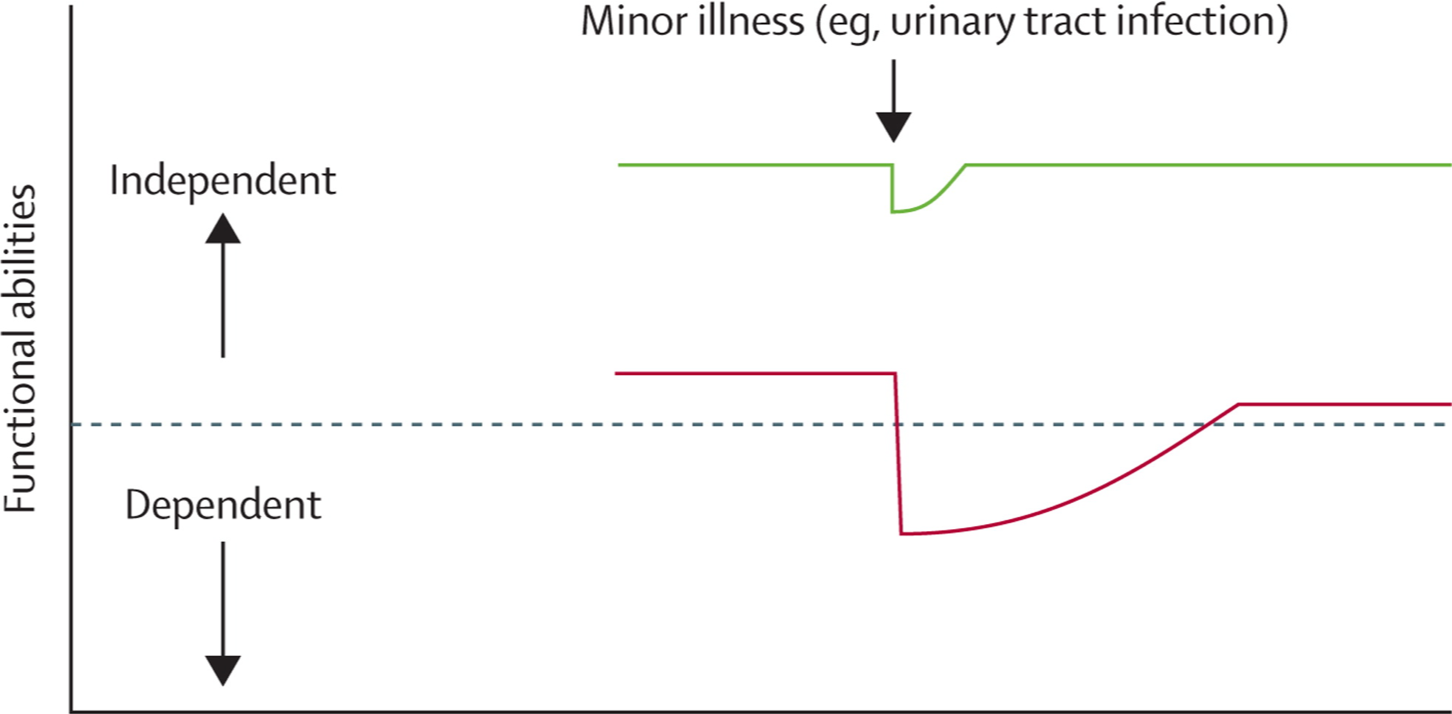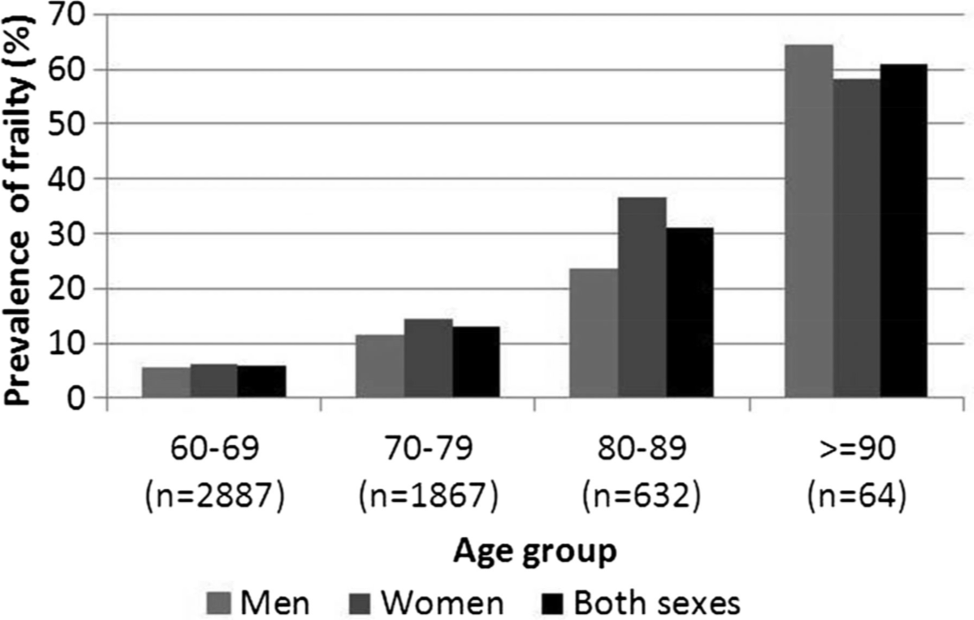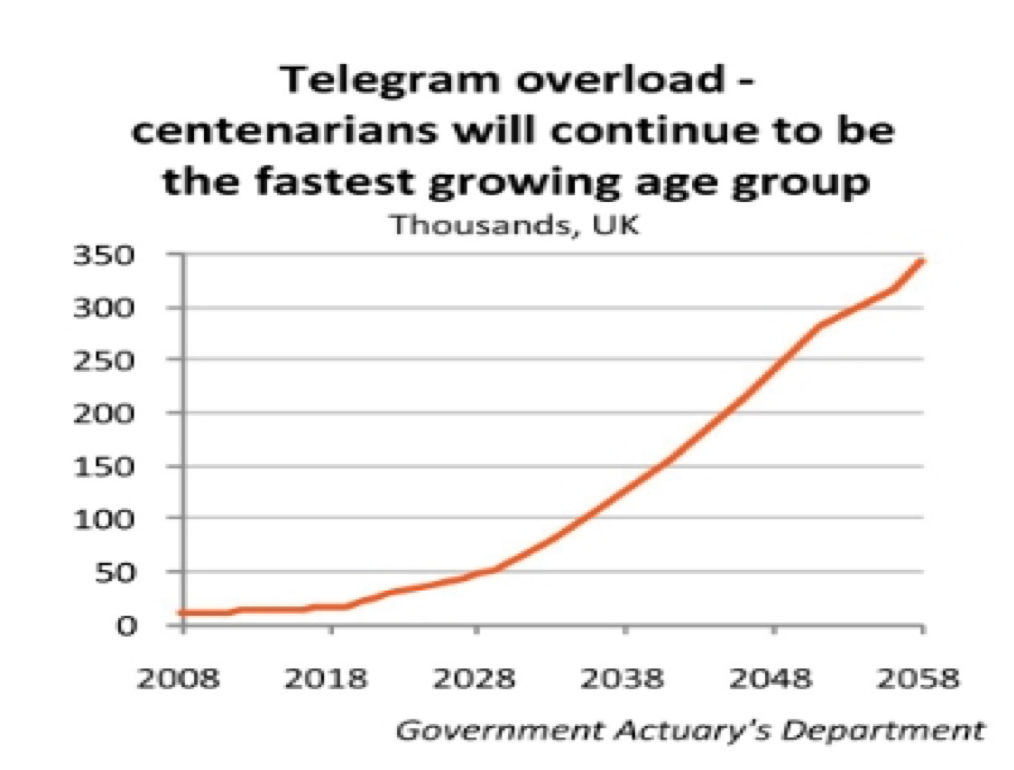Frailty: what’s it all about?
What is frailty?
- An inevitable consequence of ageing
- A state due to multiple long term conditions
- A condition in which the person becomes fragile
- A state associated with low energy, slow walking speed, poor strength
- A condition for which nothing can be done
Answer: 4 - low energy, slow walking speed, reduced strength
So the other are untrue-
- not inevitable,
- associated with multiple LTC, but can occur in the absence of these
- amenable to treatment
- unlike “fragility” frailty is a specific syndrome with characteristic features, and a rapidly expanding research base
Frailty: why is it important
Definition: a state of increased vulnerability to poor resolution of homoeostasis after a stressor event
Condition associated with increased risk of deterioration:
- “acute frailty syndromes” – falls, delirium (or acute confusion), “off
- legs” may result from a relatively minor insult
- Higher risk of acute hospital admission
- Care home admission
- Death
How is frailty diagnosed?
Phenotype model:
- Walking speed reduced, grip strength low, immune deficits, reduced
- ability of withstand an “insult”
- Useful in clinical trials, difficult to implement on large scale,
- Walking speed
- timed up and go test (TUGT) used
Frailty assessment tools
| Primary care/community care/outpatients | Acute care |
| Gait speed <0.8m/s | Clinical frailty scale |
| Timed-up-and-go test <12s | Reported Edmonton frail scale |
| Grip strength | ISAR tool |
| PRISMA 7 questionnaire | (Gait speed) |
| Clinical frailty scale | |
| Edmonton frail scale |
Cumulative deficits model
Proven to correlate with comprehensive geriatric assessment
Theoretical background to the development of the electronic frailty index (eFI); searches in the primary care record for 36 variables (diagnoses, symptoms, sensory impairments, disabilities)
Proven to identify risk of hospital admission, care home admission, death
Using the eFI
Proven statistically to identify a cohort of people who are highly likely to be frail
Like any other statistical tool will identify false positives, hence clinical correlation is essential
Clinical knowledge of patient, TUGT or other frailty assessment
Is frailty amenable to prevention and treatment?
Yes
“healthy ageing” reduces the risk of developing frailty:
Good nutrition
Not too much alcohol
Staying physically active
Remaining engaged in local community/ avoiding loneliness
Patients can be signposted to the NHS England and Age UK publications
What about established frailty?
Adverse effects of frailty can be mitigated- for example:
Falls risk can be reduced
Timely medication review can reduce risk of ADR, drug interaction, non-compliance
...hence BGS delighted to see the new GP contract
Frailty prevalence at various ages
Turning around years of Medical Practice
| The Past | The Future |
|---|---|
| Single organ specialties | Patient centred care |
| Disease focused goals | Principles of Comprehensive Geriatric Assessment |
| Non- integrated services | Proactive person centred care planning |
| Reactive care |
New GP contract
Identify and code for moderate and severe frailty
Ask for consent to share further information using the Summary Care Record
For severely frail patients:
- Falls assessment
- Medication review
Severe frailty:
Average practice list per GP:
- 2,000 (significant variation around the country)
- 7% of the population over 65 yrs are likely to be severely frail
- In an average practice this is about 27 patients per GP
- “Pulse” estimate 0.5% of practice population
Based on GP contract data as at 31 Mar 2018, there were 320,000 people aged 65 and over with a coded diagnosis of severe frailty (c. 3.2% of 65+ population). This was an average of 46 patients per GP practice or 0.6% of the average practice list. [Source: Fusion48]
Comprehensive Geriatric Assessment
Multidisciplinary assessment of physical, psychosocial, functional and environmental factors
Multidisciplinary team come together to agree a plan with the patient (and where appropriate their family)
Plan enacted; team can ensure actions implemented
Review with agreement of any further actions
Patient receiving CGA 12 times more likely to be alive and living at home 6 months after intervention NNT 24
Falls assessment
Evidence is for multidisciplinary assessment, commonly several factors identified:
Eg 87 yr lady with dementia, hypertension, ischaemic heart disease, diabetes (type II), osteoarthritis
3 falls in the last 4 months.
One known about by practice when fractured radius
Taking night sedation (long acting benzodiazepine), gliclazide, enalapril, isosorbide mononitrate, paracetamol, amlodipine, GTN spray
Urgency, frequency, nocturia- falling at night trying to get to the toilet
Painful OA, disuse wasting of quads
Wearing spectacles- no vision check for 2 yrs
HbA1C 52
L/S BP: postural drop- enalapril dosage reduced
HbA1C too tight- on gliclazide 80mg once daily- stop
Night sedation slowly weaned
Over active bladder symptoms identified and treated
Commode next to the bed supplied
Family arranged optician check- specs updated (no bi-focals)
Improve analgesic treatment of knees- encourage and support to attend local gentle exercise group
Extra rail on the stairs fitted
NICE guidance: multifactorial assessment (re falls)
- identification of falls history
- assessment of gait, balance and mobility, and muscle weakness
- assessment of osteoporosis risk
- assessment of the older person's perceived functional ability and fear relating to falling
- assessment of visual impairment
- assessment of cognitive impairment and neurological examination
- assessment of urinary incontinence
- assessment of home hazards
- cardiovascular examination and medication review
NICE: multifactorial interventions
- strength and balance training
- home hazard assessment and intervention
- vision assessment and referral
- medication review with modification/withdrawal
One study (2016) found that 65% people admitted to hospital after a fall were taking at least one medication associated with falls
Medication review
23% of all over 75 yr olds taking inappropriate medications
Recent paper analysing primary care patient safety incidents highlighted medication issues
High risk medications: warfarin, insulin/ sulphonyl ureas, opiates
Problematic combinations: NSAIDs and ACE inhib
NSAIDs and warfarin
Guides to support deprescribing
O’Mahony et al STOPP/START criteria for potentially inappropriate prescribing in older people: version 2. Age Ageing. 2014 October 16, 2014.
NICE. Managing medicines in care homes (SC1). London: NICE, 2014.
https://www.york.ac.uk/inst//crd/pdf/eff ectiveness-matters-January-2015- frailty.pdf
https://www.york.ac.uk/media/crd/effecti veness-matters-aug-2017-polypharmacy- pdf


